By honing in on growing product areas and pack formats across cheese, milk and yogurt, you can ensure you’re milking dairy sales.
Who’s got the time to grate their own cheese for dinner these days? Certainly not busy shoppers at Richard Inglis’ three Southampton c-stores, who generally prefer to pick up the pre-grated stuff over block formats.
Says Richard: “If you’re not already stocking grated cheese then give it a go! I was surprised, but when I looked over my sales figures I saw that my three top-selling cheeses, by volume, were pre-grated mature Cheddar, regular Cheddar and mozzarella. Together those three lines count for 175 units a week.”
Richard reckons that the pre-grated format naturally chimes with meal-seeking consumers searching for something extra-convenient. Plus, whatever form it comes in, Cheddar is always a winner with the British public.
Dairy Crest cheese marketing controller Nigel Marchant says: “Faster pace of life and fragmentation of family mealtimes, meaning kids are increasingly eating alone, continues to drive demand for convenient product solutions that help cut down on mealtime preparation and propel a need for shortcut solutions that are still fresh, nutritious, can be customised, and can easily and safely be prepared by kids themselves.” Marchant notes that grated Cheddar has seen a 13% value growth in convenience.
“Grated cheese is bought by more than half of UK households, and has continued to build penetration and volume per household,” he adds.
In the wider market, 2018 has been the year that Cheddar has been dominating the nation’s cheeseboards. Kantar Worldpanel reports that Cheddar brands’ value grew 3.9% (w/e 20 May 2018) – although much of that uplift may be down to inflation.
Cheddar is just one block of Richard’s un-brie-lievable cheese selection. His stores take in everything from Cheestrings for the kids, to speciality big-hitters such as feta and Somerset brie.
As a bit of a cheese connoisseur himself, Richard takes a personal interest in getting the range exactly right. “I’m a big lover of cheese,” he admits.
“Around this time every year I get a big telling off from my guys because, come Christmas, I go nuts when I see what’s available and end up ordering loads of stilton and soft cheeses. They’re like ‘Please – not everyone loves strong cheese as much as you do’.”
He believes that his team might be right to curb the worst excesses of his lactose lust. In reality Richard’s seen that most customers prefer lighter tastes such as mozzarella, and that “once you get past the big ones it does tend to get pretty marginal – it’s not like we’re selling 200 units of Boursin a week.”
Still, cheeses that were once seen as strictly deli fare are increasingly becoming a fixture at more c-stores. Take Anita Nye’s Premier Eldred Drive Store in Orpington. Kent.
On the relatively compact shopfloor (1,200sq ft) every category has to earn its space. Yet there’s definitely room for the likes of halloumi, brie and stilton alongside the basics.
Anita has even cut back on soft drinks to provide more space for cheese. “We do absolutely loads of cheese,” she says.
“We had a refit about five years ago and that’s when we had a big set of chillers put in. Originally we used the end part for soft drinks, but we got rid of it so we had more room for savoury products such as the cheeses.
“Like everyone else we do the basics such as mild, mature and extra-mature Cheddar. We do Cathedral City as our premium option and then there’s Happy Shopper and Euroshopper for people on more of a budget. It’s not just blocks of cheese, we sell the slices and the grated, too – and kids really like the Cheestrings.”
Meanwhile, other stores are busy doubling down on dairy by providing local products as a point of difference. For example, Cobham Community Stores in Kent offers regionally-sourced cheeses alongside more standard options.
“We have about a third of the store open to promoting local products, while the rest is traditional convenience store stock,” says store manager Seve Ashby.
“So in dairy we have local cheeses like Kentish Blue, Ashmore Smoked – all the main Kentish cheeses. We don’t have a deli counter so they’re all individually wrapped and priced. We also stock Simply Ice Cream, which is made in Kent using local ingredients. It’s all made on the same farm and it’s really good.”
Cheese snacks make their mark
The adult snacking area is undoubtedly the star performer in cheese, states Anca Lazar, brand manager at Cathedral City Snacking. However, he claims that c-stores are failing to capitalise on this opportunity.
“The traditional convenience sector (symbol and independent grocers) has yet to fully unlock this growth, with volume lagging behind the wider market and distribution of adult snacking lines remaining low (just 22%).”
He points out that dairy snacking can steal a march on traditional counterparts because it’s naturally low in sugar.
“With the recent backlash against sugar and consumer movement towards naturally nutritious, less processed products, together with growing popularity of protein-based snacks, cheese is perfectly placed to drive consumption at snacking occasions,” says Lazar.
“A naturally nutrient- dense product, rich in calcium and a good source of quality protein, cheese offers a credible alternative to traditional sweet and savoury snacks.
“Snacking on cheese is already an ingrained consumer habit, with 44% of adults claiming to have snacked on cheese between meals (Mintel).”
Dairy Crest’s Cathedral City with Crackers & Pickle underwent a makeover earlier this year, including a packaging reduction and rebranding under the new name ‘Lunch Pack’.
“The Lunch Pack’s new packaging and identity improve on design, environmental impact and merchandising efficiency while maintaining the Cathedral City product quality that consumers know,” says Lazar.
Mondelez has also been busy in the cheese snacking arena, launching Dairylea Dunkers sweet chilli Baked Bites (rrp £2.71), aimed at more adventurous consumers.
“Innovation in snacking kits is a clear growth opportunity,” says Dairylea brand manager Rebecca Prout. “We are sure that combining the third favourite flavour in the crisp category, sweet chilli, with Dairylea’s calcium-filled cheese will entice parents and children alike to engage in the snacking kits segment, which is the fastest growing segment in processed cheese.”
Negotiating local
Like many retailers who’ve gone down the local route, Seve has found that “prices can be a bit bonkers at times”. This has meant employing a bit of old-fashioned chutzpah in negotiations with key suppliers.
“We’re so teeny-weeny that some suppliers are just beyond our reach,” she says. “Either the minimum order is too high or we could afford it, but we haven’t got the room to store that much stock.
“[Supplier] Cut and Cured have been so good to us. They’ve lowered their minimum order and don’t mind too much with me messing about with deliveries. I think of them as our brokers. We don’t have to go direct to the Kentish Blue people, they can source it for us and it’s all in one place.”
Seve says that the local angle is a real hit with shoppers, whether they’re part of the community or out-of-towners. Plus, she feels the store is supporting some amazing dairy producers.
“It’s great to have quality, and most importantly it’s local,” she says. “It’s not made on a conveyor belt by robots. It’s people making good products for other people.”
Stepping away from the cheeseboard for a minute, it’s important to look at c-stores’ other dairy mainstay: milk. Fresh milk sales increased 4.1% in 2017 (Kantar Worldpanel) with shoppers splashing out £11.8m on branded products. Margins may be poor, but there’s always the top-up picks that go along with milk, and the opportunity to be a daily destination for pint-purchasing consumers.
Anita says that getting the price right is essential for maximising sales of the white stuff. “It’s about getting the pricing correct – you can’t really over-price or people go elsewhere – and getting the right variety,” she says.
“Today more people are buying semi-skimmed over full-fat milk, but you really have to have both. We sell an awful lot of semi-skimmed.”
Format is also key – and can differ between stores. Anita is adamant that the bigger sizes work for her.
“We get a lot of families in, and there’s no point just buying pints if you have a family, is there? We just stock the pints for older people, who don’t tend to use much milk.”
Yet over in Southampton, it’s all about the smaller packs with the student and commuter populations.
“Milk is a key category for us,” says Richard. “We do three sizes: pint, 1.1ltr and 2.2ltr. We occasionally try to sell the really huge ones, but I don’t reckon people buy those so much– they’re so hard to pour!
“If I look at my milk figures, semi-skimmed is by far the leader – in rough terms full-fat is about half of semi-skimmed’s sales.”
In such a fast-moving category, every retailer agrees that maximum availability is a must. Richard uses an automatic ordering function on his in-store epos which he believes “keeps things pretty tight”. In fact, the only time he’s had an issue was when last year’s snow wiped out deliveries to the depot.
Even if you don’t have a super-smart epos there are other ways to get ahead. Richard says his staff have to be “a bit clever” about how they stock fresh milk.
“We tend to make sure our profiles on the milk are a bit higher, just so we never run out,” he says.
“We’ll get a fresh delivery and make sure the stock is rotated – but not necessarily get the new stuff on the shelves until lunchtime. It’s certainly never about conning our customers, just making sure they get the best dates and we work through the stock.”
Getting milk right takes a lot of work – whether that’s rotating stock, keeping the fixture clean or making sure it never runs dry. In recent years it’s become important for retailers to clock changing consumer needs, too. Right now that means making room for dairy-free products.
Brits spent an extra £66m on the dairy-free category in 2017, with sales soaring 17.4% to £445.8m (Kantar). It isn’t just the growing number of vegans who are driving these sales, more people are choosing to cut back on dairy as part of their diet.
Whatever consumers’ reasons for switching, it’s an evolution that’s already being reflected on the nation’s c-store shelves.
“I’ve found that people are changing what they want from dairy,” says Anita.
“At our store, soya milk is becoming a lot more popular. There’s so many to choose from these days. We do Alpro original, an almond and a hazelnut, and we’ve just started stocking the Alpro coffees as well.”
A premium proposal from McLelland
As the nights draw in what hungry shopper would say no to some melted cheese on a slab of crusty bread?
That’s what Lactalis McLelland is counting on with the launch of its new Seriously Melting Pot, which can be heated in the oven until golden and melting, or in the microwave. It is available in aged Scottish Cheddar or roasted onion flavour (rrp £2.99).
Selling the cheese in a classy glass jar adds an upmarket twist. As does the fact that the brand can offer genuine provenance along with a unique format.
“People want to know more about the food they are eating and where it comes from, which makes a product’s provenance hugely important,” says Mike Chatters, sales director for Lactalis McLelland.
“The Seriously brand is produced, cut and packed at Lactalis McLelland’s creamery in Stranraer in South West Scotland and all products in the range now feature the Red Tractor logo on-pack. The company has close ties with the local farming community around Stranraer from which it sources high quality Scottish milk to make the finest quality Cheddar.”
Dairy-free direction
Richard isn’t quite as enthusiastic about dairy alternatives, but he recognises that it’s definitely a niche that retailers can build on.
“One of our Alpro skus sells about 51 a week,” he says. “So it’s not bad numbers at all – but not crazy for us. I’d advise people to maybe start with stocking a couple of the Alpro products, and see how that goes before you get in lots of weird and wonderful milks.
“There’s a lot of talk about dairy-free at the minute, and customers might say that’s what they’ll buy, but when they’re in the store it’s a different story.”
Elsewhere in dairy, retailers have been reporting mixed fortunes with yogurts. The market has grown ever-more fragmented as dairy-free, indulgent and healthier options battle it out for chiller space.
That’s reflected in the market figures: volumes for the yogurt brands are down 1.3%, while own label has risen 6.1% (Kantar Worldpanel).
“Yogurts have really become hit and miss for us,” says Anita. “We do well on the kids’ stuff, such as the Peppa Pig yogurts – they fly out. The larger Onken tubs do okay, too, but overall sales have fizzled out a bit.”
“The market’s definitely changed in yogurts,” agrees Richard. “It’s a real mix between your healthy lines, and really sugary indulgent stuff.”
Both retailers say that sales of Müller Light are way down, and Anita reckons she knows why: Slimming World.
“On the Slimming World diet you used to be able to eat as many of them as you liked,” she says, “but now they’ve reclassified them as a ‘syn’. I think that’s why sales have dropped.”
Yogurts might be a mixed bag, but milk drinks are a steady seller, according to Richard. “Yazoo drinks always do well for us. I think that’s because they cover so many categories; they’re a snack, a drink and it’s on the go.”
The brand recently added a new variant. “One of the key ways Yazoo has driven growth in the category is creating news with the launch of its limited-edition choc mint milk drink,” says customer marketing manager Wayne Thompson.
“Since launch it’s now worth £1m in five months and is within the top five best-selling milk drinks in convenience (IRI).”
With a stream of new products, a wealth of formats, and the nigh-on-impossible task of meeting the needs of consumers who want big brands, local produce, indulgent treats, healthy lines and everything in between, dairy certainly isn’t an easy area to master. But listen to your customers and tailor your range accordingly and you could be the cat that gets the cream.
Innovation - Animal welfare concerns help ‘free-range’ yogurt sales
This year Lancashire Farm Dairies attempted to shake up the market with the launch of its ‘free-range’ natural yogurts.
The brand says that it’s the first UK yogurt-maker to commit to using free-range milk in every yogurt pot as its cows are free to roam the fields for at least 150 days of the year.
Lancashire Farm Dairies managing director Azhar Zouq says: “We’ve won a large number of key convenience listings in the past 12 months. The launch of free-range milk yogurts has also made its mark on sales as animal welfare has become a growing trend.
“The natural yogurt sector within convenience is currently valued at just under £7.9m, an increase of 3.1% compared with the same period in 2017 (IRI).”
The brand has put its weight behind bigger pot sizes as well. Zouq believes this doesn’t just signpost value for consumers, but also helps stores capitalise on Instagram-friendly healthy eating trends.
“Stocking the larger pots allows retailers to cross-merchandise with other ingredients,” says Zouq.
“This encourages shoppers to use the product as part of a recipe or meal idea such as the recent trend of ‘overnight oats’, which would also encourage sales of accompanying ingredients.”






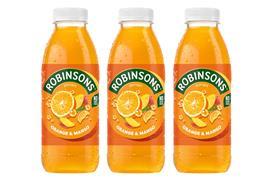
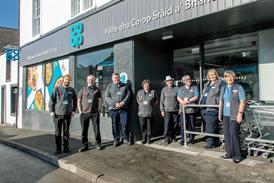

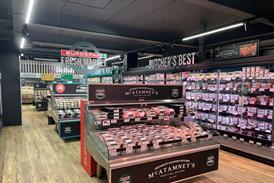

![WG-4003[58]](https://d2dyh47stel7w4.cloudfront.net/Pictures/274x183/4/5/1/353451_wg400358_6083.jpg)




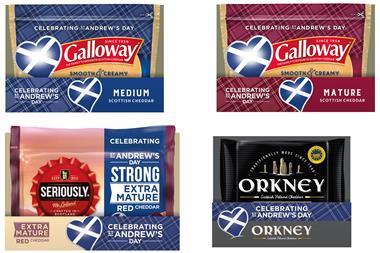
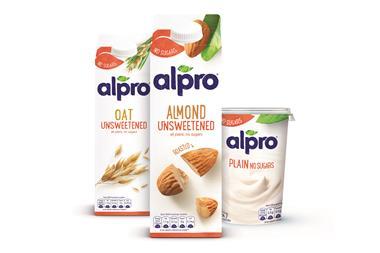
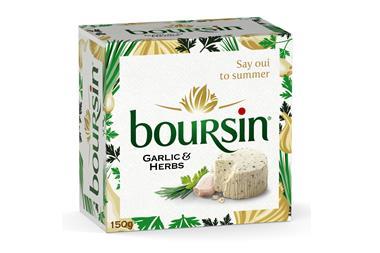
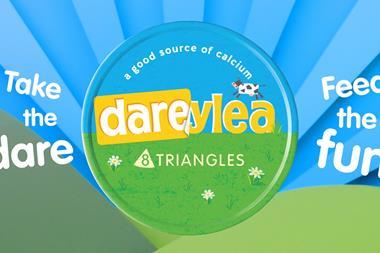
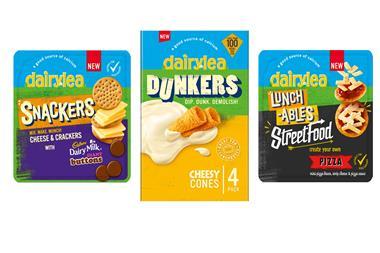
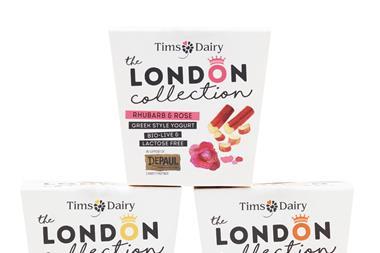





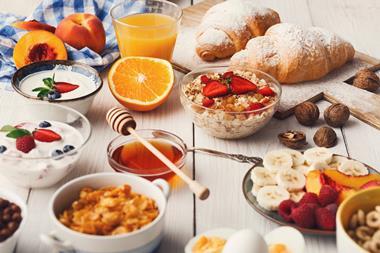
No comments yet